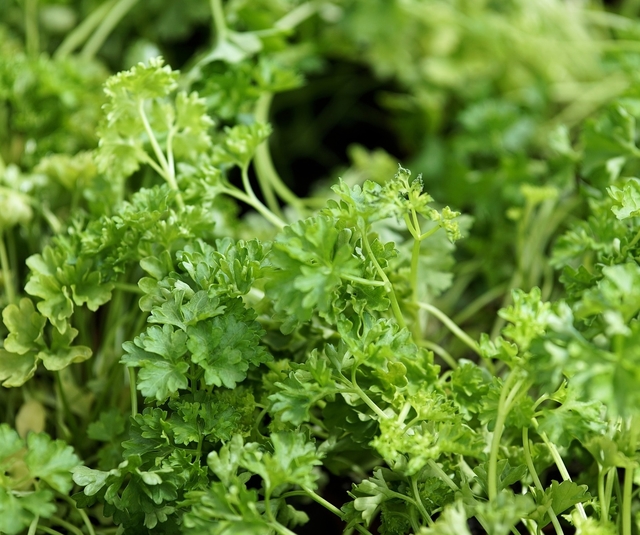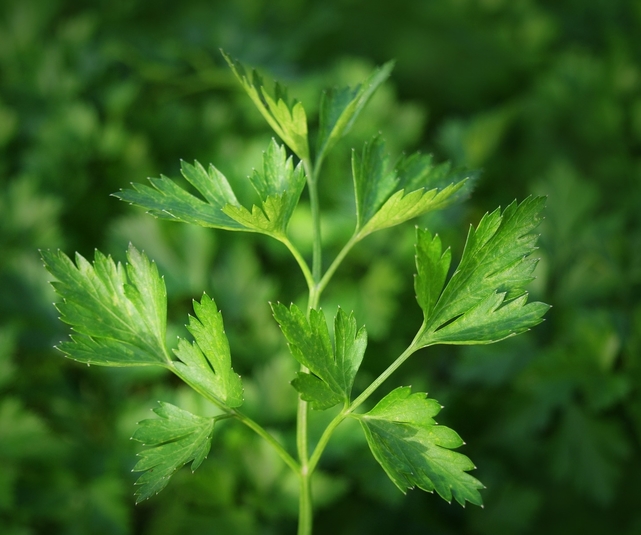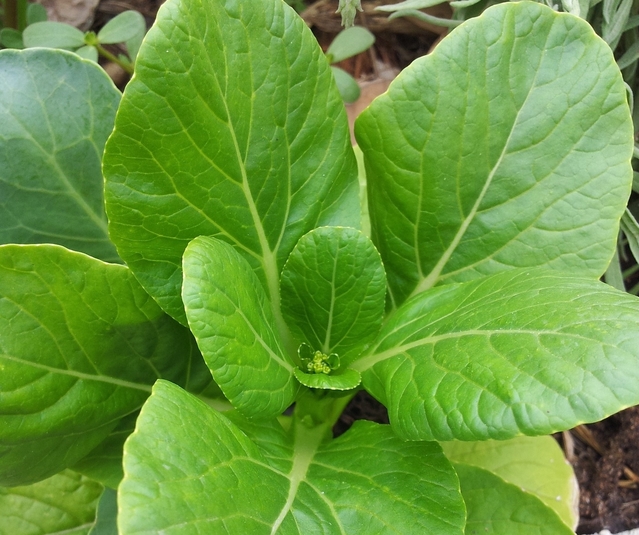Signs your Hosta is Water Stressed
Signs Your Hosta Plant is Water Stressed
Hostas are well known as easy-care perennials. The fact that they come in such a variety of sizes, colors and leaf shapes is just one more reason why hostas remain one of the most popular perennials for shady and part sunny gardens.
Growing Parsley for Chickens!
Great Herb to grow for your Hens!
Parsley is the perfect addition to your chickens diet as it is rich in vitamins, promotes circulatory system development, and is a strong stimulate for laying.
While they may not take to it at first, there are a few different ways you can incorporate parsley into your girls diet. Adding it fresh and chopped up to their layer feed is the best and easiest option (they will hardly even tell!) or you can try leaving a pot in the run for them to peck at the leaves, or scattered around the coop-it’s all down to your chickens preference!
Types of Parsley
Starting Parsley from Seed
Spring Sowing

Winter Sowing
For our article containing detailed information about Winter Sowing, click here
Other Sowing Tips

Growing Parsley
Dividing Parsley

Cuttings of Parsley
Harvesting Parsley
Harvesting Parsley Seed
Storing Parsley
Fresh
Bouquet Storage
- Clean and thoroughly dry the herb.
- Trim the end of the stems and remove any wilted or browned leaves.
- Fill a Mason jar or clear glass with 1" of water.
- Place the herbs in the jar like a bouquet of flowers
- Loosely cover with a plastic bag or cling wrap. Label and store in the fridge.
Freezing Parsley
Tray Freeze
Ice Cube Trays
Flat Freezer Bag

Drying Parsley
Hang to Dry
Dehydrate Parsley in Dehydrator
Growing herbs for your egg-laying flock is fun, easy, more healthy than the herbs shipped to grocery stores, and what's best, saves you tons of money! Try it today!
This post may contain some Amazon Associate links meaning that I will get a small compensation at no expense to you if you purchase something from this blog
Use of Epsom Salt on Hostas
Use of Epsom Salt on Hostas!
Hostas continue to be one of the most popular perennials in shady and party shady gardens. It's no wonder. Hostas are easy to grow and care for, they don't require a lot of special attention and they come in a vast array of sizes, shapes, and great leaf colors.
Spring Care for Hostas!
Spring Care for Hosta Plants
After a long, dreary winter, Springtime in the hosta garden seems like a magical time. The hostas are sprouting their gorgeous green tips signaling the beginning of another great gardening season!
Keep your hostas looking happy and healthy with these seasonal reminders and care tips for Spring!
Sun's Effect on Blue-Leafed Hostas
The Sun's Effect on Blue Hostas
Blue hostas require the most protection from the sun because the blue color is actually a waxy coating on the top and or bottom side of the leaves. The leaves are actually a shade of green, but the waxy coating makes them appear those great shades of blue.
Too much sun can cause the waxy coating on blue hosta leaves to melt off and expose the green leaf underneath. This is the reason it is recommended that blue hostas are planted in more shade than other hostas.
The blue hostas are always very popular and there are several shades of blue-leaved hostas. Blue hosta leaves will become bluer and bluer each year as they move to maturity, usually about four to five years.
Growing Mustard Greens - Homesteading 101

Mustard greens are fast growing, nutritious leafy greens. They're perfect for gardens and containers in both spring and fall. They are a high biomass, nitrogen lifter for growing over the summer. It is one of the quickest growing, green manuring species and is very good at suppressing weeds. Used for creating short term green cover and game cover.
Mustard Greens
aka Mizuna, Mustard Spinach, Indian MustardAnnual plant
Height: 6" Width: Up to 2'
Mustard Greens are a leafy plant with a zesty mustard flavor that is a fiber and nutrient-rich addition to salads and stir-fries.
Types:
Curly Leaf. Curled or frilled leaf edges resembling Kale. It's a very spicy tender green used in salads.
Flat Leaf. Broad delicately flavored leaves are good for steaming or in soups.
Mustard Spinach. Smooth leaves. This plant is more tolerant of heat, making it a good choice in warmer climates.

Starting Seeds of Mustard Greens
Seed Depth: Lightly cover the seed and tamp down on the soil.
Seed Spacing: 6" apart, and thin to 19" apart.
Germination Temp: 45-85 degrees.
Days to Germinate: 4-7 days.
Days to Harvest: 30-40 days or 60-70 days depending on the variety.
Seed Longevity: 2-3 years.
Sowing Indoors:
Spring: Sow 6 weeks before your average last frost date. Plant out 3 weeks before your average last frost date.Sowing Outdoors:
Spring: Direct sow 3-4 weeks before your average last frost date.
Winter Sowing:
If you haven't tried winter sowing, you're in for a treat. This method is especially good for sowing herbs and greens. Winter sowing is basically sowing seeds in the bottom of a milk jug during the winter, setting the milk jugs outside for the winter and leaving them there until the seeds germinate in Spring.For more detailed information about Winter Sowing, click here.
Growing Mustard Green Plants
Growing Temperature: Tolerates light frosts which make leaves sweeter.
Plant Spacing: 12"
Container Size: 8" deep.
Sun/Shade: Sun is ideal. It also tolerates shade.
Soil: Moist, rich, well-draining.
Watering: Evenly moist for best flavor. 2" water per week.
Try Audible and Get Two Free Audiobooks
Fertilizing
Since greens are such a fast-growing crop, as long as they are grown in rich soil there may be little need for further fertilization. That said, a liquid balanced fertilizer when the seedlings are 4" tall will give your greens a boost and carry them through their short season. After the temperatures warm, though, the leaves of Arugula will turn bitter and no amount of fertilizer will help at that point.
Growing Tips
Sow Mustard Greens in succession every 2-3 weeks for a steady supply.
Harvesting Mustard Greens
Begin harvesting outer leaves in about 4 weeks when the leaves are 6-8" long, or treat as cut-and-come-again and harvest the whole plant 3" above ground level.- Use smaller Mustard Green leaves in salads or on sandwiches for a peppery zing.
- Use steamed, braised, cooked in broth.
Storing Mustard Greens For Later Use
Although tender green leaves, like lettuce, cannot be preserved well, the thicker leaved greens can be preserved.Fresh
- Clean and pat dry. Bundle stems lightly, place on a paper towel (to absorb moisture) and wrap in a plastic bag. Keeps in refrigerator for 10 days.

Freezing for Later Use in Chilis, Soups, Sauces, and Casseroles.
- Steam or saute' leaves, chop them and store in freezer bags.
- Puree with water and freeze into ice cube trays.
- Clean and dry the leaves and store in quart size freezer bags.
- Frozen leaves will keep for 6 months.
- Blanching the leaves first for two minutes will extend freezer storage to 14 months.
~~~~~~~~~~~~~~~~~~~~~~~~~~~~~~~~~~~~~~~~~~~~~~~~~~~~~~
Mustard greens are fast growing, nutritious leafy greens. They're perfect for gardens and containers in both spring and fall. Although not quite as cold hardy as collards or kale but mustard greens do tolerate a light frost, which makes their leaves sweeter.
In areas where there are no killing freezes, gardeners enjoy growing mustard greens all winter long. The mustard patch is a pretty sight in the cool season garden. The leafy plants are easy to care for and good companions to fall flowers such as pansies. Mustard greens grow in a rosette of leaves up to about a foot-and-a-half tall. You can simmer the big peppery greens or pick smaller, young leaves to eat raw in salads and sandwiches.
~~~~~~~~~~~~~~~~~~~~~~~~~~~~~~~~~~~~~~~~~~~~~~~~~~~~~~~~~~~~~~~~~~~~~~
Featured Post
Welcome!
Thanks to you, we've hit over 1.7 MILLION pageviews! Homesteading is a journey, an adventure, and an ever-evolving quest to make our h...
























